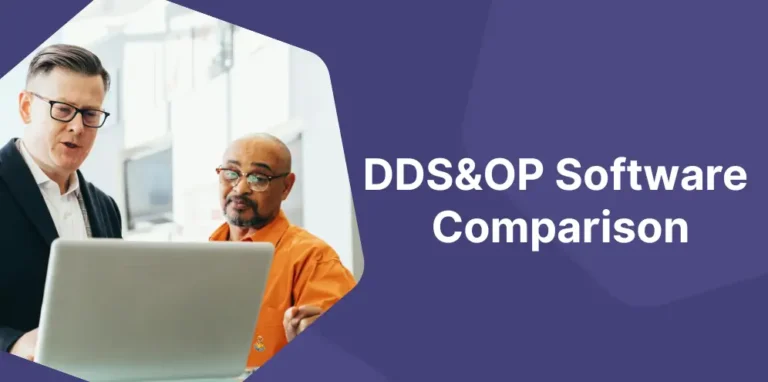A DDMRP Practitioner Talks About the Evolution of PwC’s Global Operations Practice
Ivan Lavatelli is the operations leader for PwC Italy and the global lead for PwC’s DDMRP practice. He’s also been a driving force behind Demand Driven Technologies’ presence in the European market. We sat down to chat with Ivan about his experience evolving PwC’s operations focus from traditional APICS thinking about supply chain management to demand-driven MRP.
Q: How did you first get involved in DDMRP?
Lavatelli: I’m very active in the APICS community, and I’ve served as a trainer for classical certifications like CPIM and CSCP for many years. In fact, I still do. I guess you could say I’m kind of a geek when it comes to supply chain topics. When I first heard about the Demand Driven Material Requirements Planning (DDMRP) concept, I was immediately interested. It sounded like it might solve a lot of the issues our clients were having. Unfortunately, at the time, I didn’t have enough time on my hands to research it as much as I would have liked.
Then, about four or five months later, I ran across it again. This time, I spent a few hours digging into it and studying how it addresses the traditional issues with Material Requirements Planning and the supply chain. It was like a revelation. The more I studied, the more the pieces started falling into place. That’s when I got in contact with the Demand Driven Institute.
Q: Were you the first to introduce DDMRP to PWC? How did that go?
Lavatelli: Most of our operations practice managers are like me. They are intensely curious people, but we’re well-versed in the traditional APICS concepts of managing supply and demand. In some ways, selling internally to PwC was more difficult than selling the idea to an operations manager who’s having a problem balancing inventory with service levels.
But, we’ve made tremendous progress over the last couple of years to the point where we have global acceptance throughout the PwC organization. Our country managers meet quarterly and in biweekly teleconferences to share best practices, and DDMRP is one of them. The number of countries with a DDMRP practice rose to more than ten last year. For example, PwC India just announced their new DDMRP practice in November. DDMRP definitely has upward momentum across PwC.
Q: Tell us a bit about the kinds of clients you work with and what they know about DDMRP when they first come to you.
Lavatelli: We work with both manufacturers and distributors, from the fairly small to the large global organizations. Like us, most of these guys are APICS people, so they’ve not heard of DDMRP, or if they have, they don’t know a lot about it. Unfortunately, DDMRP isn’t included in the CPIM curriculum, at least not yet. So, these clients don’t come to me asking about DDMRP. I have to reach out to them and do a bit of education.
Q: Is it difficult to sell the concept of DDMRP to them?
Lavatelli: Not as much as you might think. Yes, some of them have been using MRP software for decades, but they’re also painfully aware of its inherent limitations. They’ll attend our session at a conference or hear us speak in some other venue, and it piques their interest. It’s usually a little easier for manufacturers to immediately pick up on why DDMRP works because they understand the idea of decoupling bills of material. Those focused on distribution don’t spend as much time thinking about the BOM.
Still, when it comes to adopting DDMRP, it often requires a paradigm shift across the board: executive management, operations leaders, production managers, and so on. The results speak for themselves, but it’s a good idea to implement sound change management practices, just as you would with any other major business initiative.
Q: What problems are they trying to solve?
Lavatelli: It almost always involves either inventory or service levels, usually a combination of both. Manufacturers, even those who use MRP applications – or maybe especially those who use MRP – are always struggling with not enough of the parts they need and too much of the parts they don’t. Service levels often tie into this because that’s one of the reasons they wind up with too much inventory.
Q: Unpack that last statement a bit for us.
Lavatelli: Sure. Manufacturers and distributors want to be able to satisfy as many customers as they can to maximize sales. If they run out of something or the lead time is too long, there’s always the chance the customer will go somewhere else. So, based on the forecast, which usually comes from the sales department, they’ll stock the items they think will be sold during the period.
Of course, the last thing the sales department wants is to lose out on the business because they don’t have what the customer needs when they need it. So, they’ll almost always over-forecast what they plan to sell, leading to elevated inventory levels.
Meanwhile, long-range forecasting is hard and almost never accurate. So, sales may still under-forecast demand for some products. And, management doesn’t want to tie up working capital in inventory, so they’ll scale back sales’ projections. Sometimes they’re wrong, and that leads to even more stockouts.
It’s a scenario that’s almost universal across manufacturing and distribution, so it’s easy to speak to operations managers about the pain they’re feeling. At a fundamental level, it’s the same conversation every time.
Q: Sounds like a real challenge! Is there a client engagement that is most memorable for you?
Lavatelli: Yes. The very first client I helped came to me with an internal service level of 62%. Of course, if you talked to their customers, the service level was nowhere near that low because their distributors held inventory. But, forcing their distributors to hold inventory isn’t ideal for anyone. Within a matter of only six months, we were able to get them to a 93% service level by implementing DDMRP.
Their ultimate target is 95%, but now they’re starting to combine some traditional supply chain management techniques like target market segmentation with DDMRP to fine-tune things. Not every segment needs a 95% service level. By segmenting their markets, they can focus their investments better.
You can learn more about Ivan Lavatelli and PwC’s DDMRP practice in Italy by visiting them on the web.
Want to see what kind of impact DDMRP can have on your inventory and service levels? Request a simulation.












